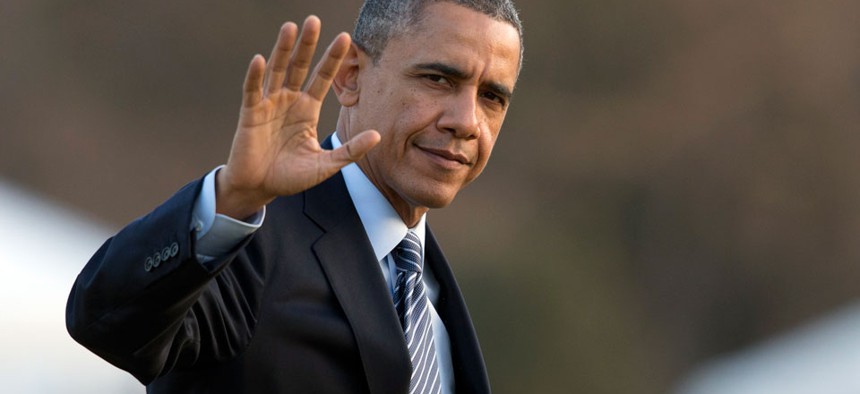The Path to Victory in 2014
The president’s languishing approval ratings point to different strategies for each party going into the midterms.
The Washington Post’s Chris Cillizza created something of a stir recently with his column headlined, “2014 Senate races may be a referendum on Obama; if so, Democrats should worry.”
Cillizza (a former Cook Political Report staffer) linked to the Gallup Organization’s just-released aggregation of all of its 2013 polling data, with President Obama’s job-approval and disapproval numbers broken down by state.
Cillizza observed that Obama has disapproval ratings over 50 percent in 10 of the 21 states where Democrats are defending Senate seats this year. The disapprovals were over 55 percent in open Democratic Senate seat states in West Virginia (67.3 percent), Montana (60.9 percent), and South Dakota (59.3 percent).
These disapproval numbers can also be seen in the two states represented by the most-endangered Democratic incumbents: Arkansas (57 percent), where Mark Pryor is facing the stiffest of all challenges, and Alaska (55.4 percent), where Mark Begich is fighting for reelection.
While Cillizza’s point is hardly earth-shattering, it is very important and worth keeping in mind. As much as anything, midterm elections tend to be a referendum on the incumbent president. When voters are unhappy, they tend to vote to punish the president’s party’s candidates. If voters are satisfied, they generally find some other basis on which to decide their vote. It may be unfair, but that’s the way it is.
As of late, Obama’s numbers have been languishing in the low 40s, occasionally dipping below 40 percent, while at other times reaching as high as 45 or 46 percent. The president’s disapproval numbers generally bounce around the 50 percent mark, half the time slightly higher, the other half a bit lower. Obama’s approval numbers are almost precisely tracking those of George W. Bush at this point in his presidency. But he is trailing far behind those of Ronald Reagan, who at this point had approval numbers in the low 60s, and Bill Clinton, who was in the high 50s.
Given this situation, the challenge for Democratic candidates is to ensure that the focal point of their campaigns is something other than Obama (and, one might add, the Affordable Care Act). In an optimal situation, Democrats should be able to put the focus on their Republican rivals’ flaws or miscues, real or imagined, thereby deflecting attention from Obama and the general disapproval that voters have with where the country is going. (The NBC News Political Unit recently found that the “right direction” number has not exceeded the “wrong track” in over 10 years, a startling sign of long-term discontent with the country’s leadership). Democratic opposition-research consultants will need to really earn their paychecks this year.
At the same time, Republicans cannot obsess over health care in this election. While polls show that voters disapprove of the Affordable Care Act and don’t think it will help them or the country, they oppose repealing or defunding it. They want it fixed, not thrown out, nor do they want to go back to square one. The smart Republicans should be arguing for fixing the flawed law; the smart Democrats should admit its imperfections and seek to improve its shortcomings. Alas, this is a difficult task for a partisan on either side of the aisle.
For Republican candidates and campaigns, it will be shame on them if they allow the focus to be put on themselves, rather than on Obama and his administration’s policies. To the extent that the GOP contenders have thus far handed their opponents damaging ammunition, they should assume that it will be used against them with maximum effectiveness. There is a reason why Republicans have only defeated three incumbent Democratic senators in the last five elections (Tom Daschle, Russ Feingold, and Blanche Lincoln). During the same period, Democrats have knocked off 11 GOP incumbents. To put it a different way, going into Election Day in 2010—a great year for the GOP when they picked up a net six Senate seats—there were seven Senate races rated as Toss-Up by The Cook Political Report. Republicans lost five out of seven. Two years later, there were 10 Toss-Up Senate races, and the GOP lost eight of them. In recent years, Senate Republicans have had an unusually difficult time knocking out Democratic incumbents, and have disproportionately lost the really close races. Part of the problem has to do with the GOP’s habit of nominating the wrong candidates. Another big factor is that Democrats have done a better job sliming GOP Senate candidates than Republicans have done trashing their Democratic competition.



